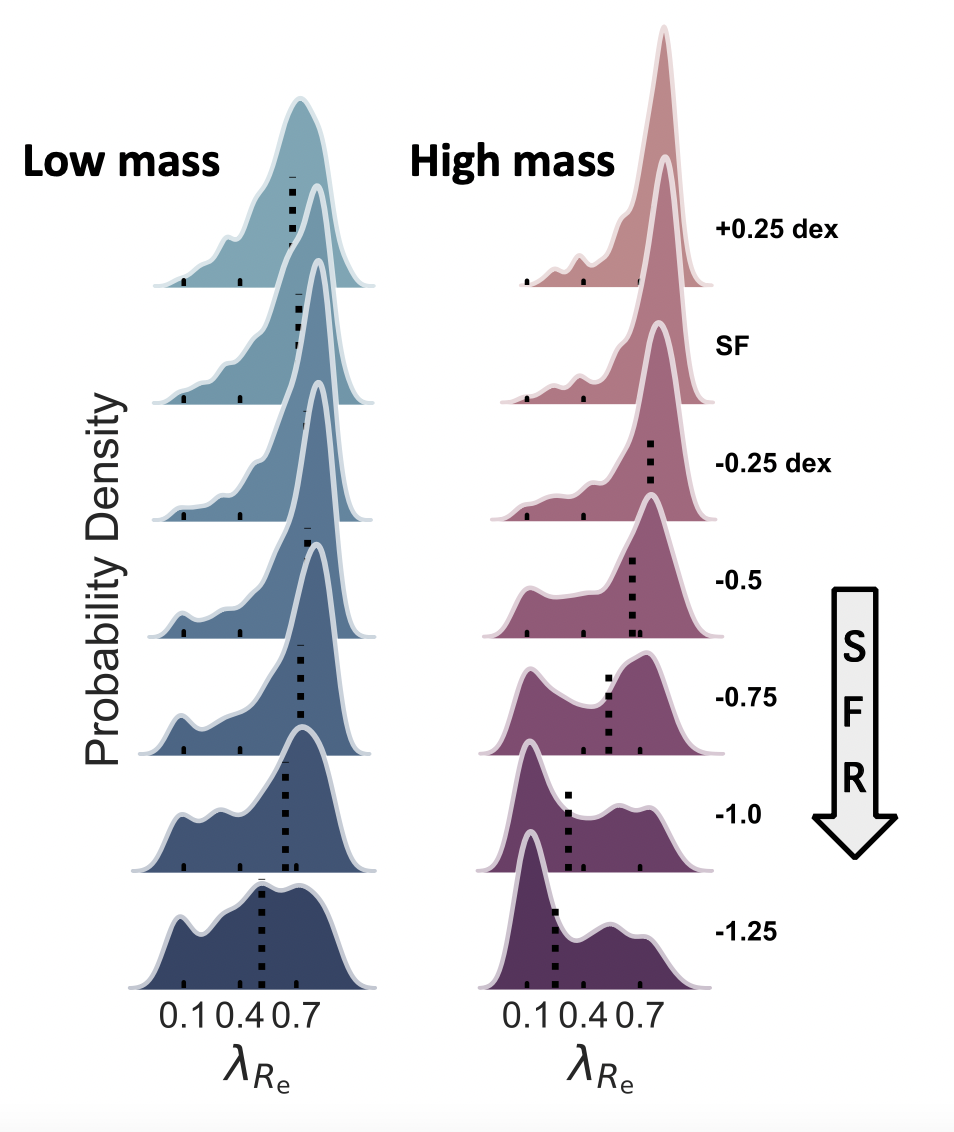Galaxies are luminous gravitationally bound systems—giant individuals forming, growing, and dying (no more growth)— in the vast space and time of our dark Universe. They only represent a tiny fraction (~1%) of total matter in the Universe, but they are luminous, as opposed to the unseen majority of dark matter. Therefore, galaxy populations have become the windows through which we learn not only about their lives but also the evolution of Universe as a whole.
We are all special and extraordinary for the precious private moments we have, while we are all ordinary and more or less similar as our lives have been and will be inevitably shaped by the overall social environment which reflects our shared culture and civilization. Similarly, the millions of galaxies in the nearby local Universe (within one billion light years distance) show a wide spectrum of structure and morphology, and they are rotating at very different velocities. There is, however, underlying simplicity beneath the apparent variety and complexity in galaxy morphology and rotation, as discovered by a study led by astronomers from Kavli Institute for Astronomy and Astrophysics of Peking University, Dr. Bitao Wang and Prof. Yingjie Peng, in collaboration with Prof. Michele Cappellari from University of Oxford.
This work, published recently on the world-leading journal Nature Astronomy, shows (see Fig. 1) that the rotation of galaxies, as quantified by the normalized specific angular momentum of stars, appears to be universally bimodal (meaning two significant concentrations in the distribution), whether among galaxies large or small (right/left column in Fig.1), young or old (up/down rows), and living in dense or sparse cosmological environment. The result reveals the fundamental and general existence of two distinct galaxy populations in the local Universe, featuring respectively fast and slow rotation. “The breadth of the analyses and conclusions that a bimodality in galaxy kinematics is present throughout the galaxy population is original and significant. I believe this work will be of significant interest to extra-galactic astronomy and cosmology, both observational and theoretical.”, said by a referee of the paper.

Fig 1: The bimodal λRe distribution varying with star formation rate (SFR), with median values shown by the black dotted lines. Blue and red column are for low-mass and high-mass galaxies respectively (blue: 109.5 < M⋆/M⊙ < 1010.2; red: 1010.8 < M⋆/M⊙ < 1011.3). As denoted on the right, SFR of galaxies decreases from top to bottom at a pace of 0.25 dex difference. The second row shows galaxies on the so-called star formation main sequence, a sequence where most of young galaxies are.
What does it mean for these two galaxy populations to have contrasting rotations? Are they living and dying in the same way? Further analyses using supplementary multi-wavelength data, presented in this paper and in a companion paper published on Astrophysical Journal Letters (Wang & Peng 2023), indicate that these two populations also manifest marked differences in their star formation histories, metal abundances, and cold gas of atomic hydrogen. These differences suggest that galaxies with high levels of bulk rotation (that is remarkable cohesion in the motion of stars) assembled their stars smoothly, mostly during tranquil and ordered periods, and finally died because of shortage in nutrients—cooled gas that can further fuel star formation. In contrast, slow-rotating galaxies formed violently through a bunch of mergers with other galaxies when the chaos induces fierce gravitational instability and not only consumes the existing nutrients but also eject them by the powerful wind and jets from the explosive massive stars and activated super massive black holes at galaxy center. Therefore, the slow-rotating population usually died very quickly.
The growth and death of galaxy populations and their physical origins have become one of the hottest topics in astronomy. This epic phenomenon in our Universe, like massive fireworks shining and dimming with time, involves many complicated processes in extreme conditions that may even lead to the discovery of new physics. Among the physical origins, the energetic feedback from the central super massive black holes to their host galaxies is a promising one. However, it is still under tense debate whether this feedback—powerful radiation, wind, or jets generated by the black holes when galaxies feed them with gas—ceases the growth of galaxies by directly clearing the existing cold gas material in the galactic bodies or indirectly by heating the surroundings of galaxies and make them starve in the future (galaxies cannot get more gas from the surroundings). This work by Wang & Peng (2023) suggests that both feedback modes are effectively functioning in natural world, but respectively in the fast- and slow-rotating galaxy populations as described above. The switch-on of a certain mode depends on how the feedback energy couples with galaxies when the feedback processes are going on (as illustrated in Fig. 2).

Fig 2: The preventive feedback mode in fast-rotating (left) and ejective mode in slow-rotating (right) galaxies. A fast-rotating disc galaxy without much gravitational interference has its cold gas settled in a planar form and the biconical wind launched by the central black hole then has little surface of impact to drive massive gas outflows. While a slow-rotating spheroidal galaxy, which must have experienced significant mergers over time, tends to possess volume filling gas in hotter kinematics and therefore its gas couples well with the wind for outflows to be driven.
The lives of fast- and slow-rotating galaxies are thus very different, like two roads diverging in our dark Universe, and a fundamental question emerges that what determines the road for a galaxy individual? This is not yet understood. “Reconciling the tension with theoretical predictions in future work will lead to an important step forward in our understanding of structure formation in a cosmological context.” as one of the
referees commented.
_____________________________________________________________________________________
This work is supported by the funds from the National Science Foundation of China and by the science research grants from the China Manned Space Project.
Original Paper:
Wang, B., Peng, Y. & Cappellari, M. (2024) Nature Astronomy
https://www.nature.com/articles/s41550-024-02376-8
Wang, B. & Peng, Y. (2023) ApJ Letters
https://iopscience.iop.org/article/10.3847/2041-8213/acd779